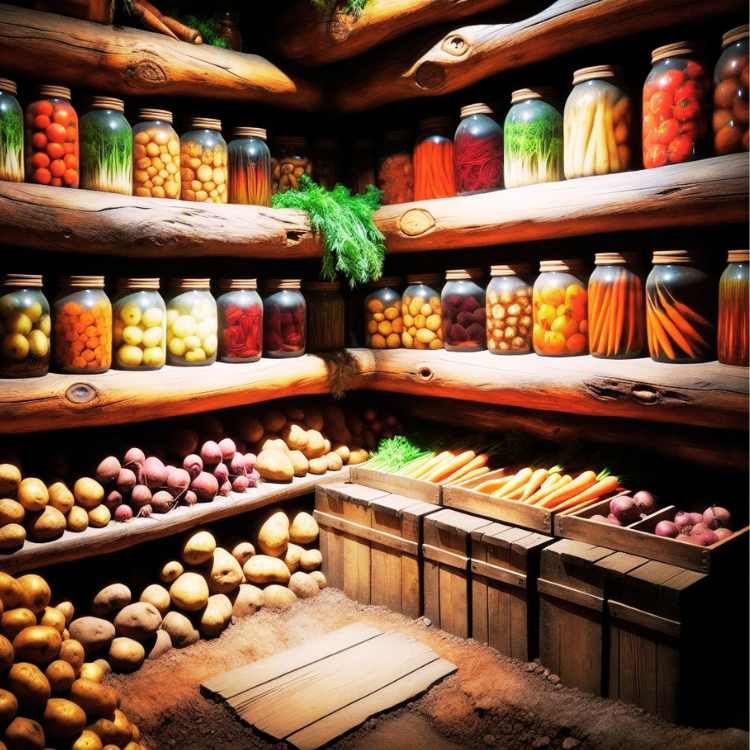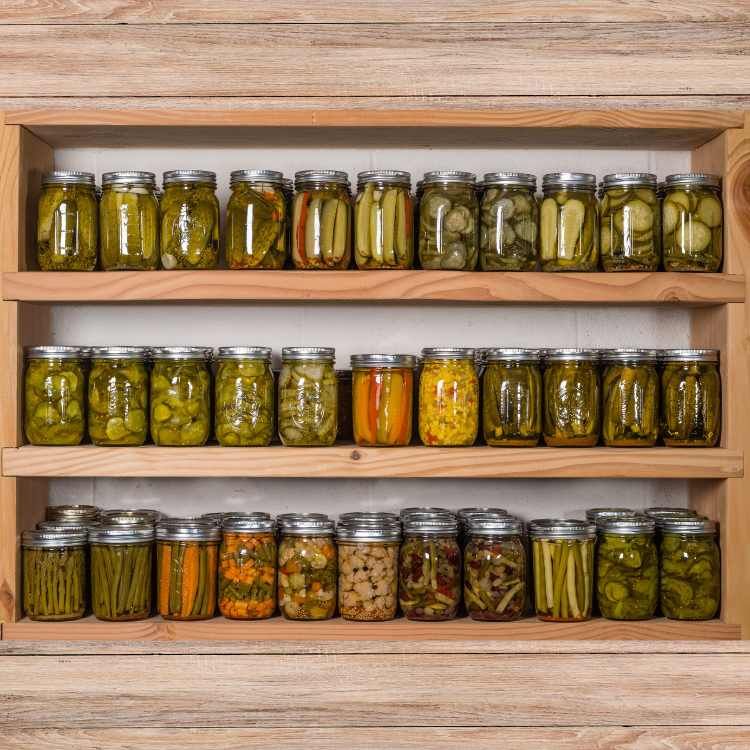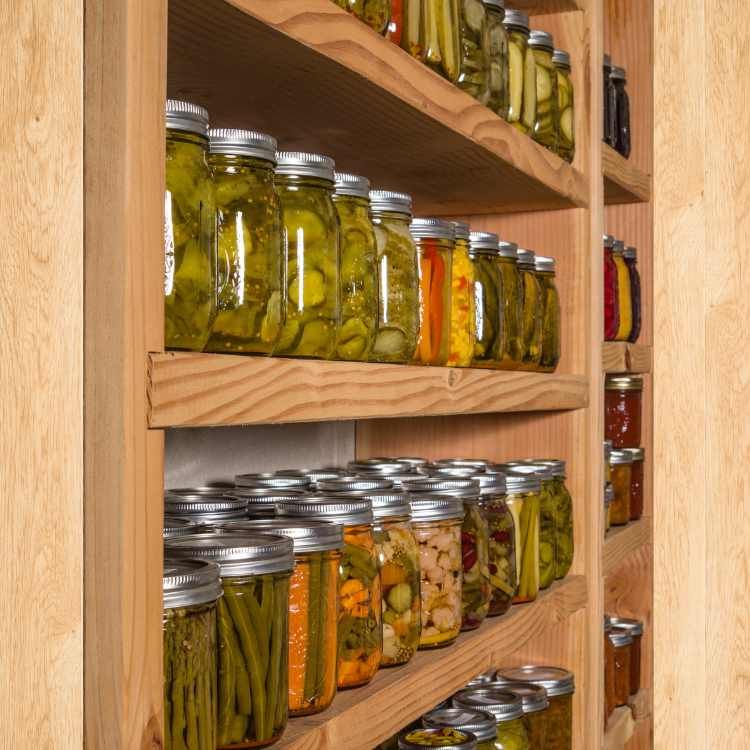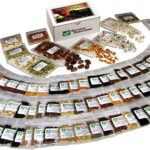
Article-at-a-Glance
Urban root cellars are a sustainable solution for city dwellers to store fresh produce longer.
Strategic placement in an urban environment is key to leveraging natural cooling and humidity.
Design considerations must include size, insulation, ventilation, and accessibility.
Proper construction materials and methods are critical for building a durable urban root cellar.
Maintaining optimal storage conditions in a compact space can extend the shelf life of various fruits and vegetables.
Have you ever thought about how to keep your garden’s bounty fresh without a sprawling backyard? Well, urban root cellars could be the answer you’re looking for. These ingenious storage solutions are not just for rural homesteads anymore. They’re making a comeback in the city, helping urban gardeners and local produce enthusiasts keep their harvest fresh for months.
Most importantly, an urban root cellar is more than a storage space; it’s a statement of sustainable living. It means taking control of your food supply, reducing waste, and embracing a lifestyle that values the fruits of the earth. So, let’s dive in and explore how you can create this practical gem right in your urban dwelling.
Why Root Cellars are a Game-Changer for City Dwellers
Think of a root cellar as nature’s refrigerator. It uses the earth’s natural insulation to keep produce cool and crisp. Because they rely on the natural cooling and insulating properties of the earth, root cellars consume no energy, making them an eco-friendly alternative to electric refrigeration.
Besides that, root cellars can also add value to your home. Whether you’re a casual gardener or a dedicated locavore, having a space to store your harvest is a huge plus. It’s not just about practicality; it’s about living a lifestyle that aligns with your values of sustainability and self-sufficiency.
Therefore, it’s clear that incorporating a root cellar into your urban home isn’t just a nod to tradition—it’s a forward-thinking move towards a more sustainable and resilient lifestyle.
Finding the Perfect Spot: Where to Build in the Urban Jungle
When it comes to urban root cellars, location is everything. You need to find a spot that’s cool, dark, and, most importantly, accessible. Basements are a natural choice because they’re already underground. But if you don’t have a basement, don’t worry. You can still create a root cellar in a closet, under a porch, or even by burying a container in your backyard.
Remember, the goal is to tap into the earth’s natural cooling. So, if you’re using a container, make sure it’s well-insulated and buried in a shady spot. This will help maintain the cool temperatures your cellar needs to be effective. For more detailed instructions, you can learn how to build and use a root cellar with the right techniques.
Blueprint for Success: Designing Your Urban Root Cellar
Now, let’s get into the nitty-gritty of designing your urban root cellar. It’s not just about digging a hole and throwing in some veggies. You need to consider size, insulation, ventilation, and accessibility.
First things first, measure your space. You want to make sure your cellar is big enough to store your harvest but not so big that it’s unmanageable. Once you’ve got your dimensions, think about insulation. Good insulation is key to keeping the temperature stable. Foam board or spray foam are great options for urban spaces.
Size and Scale: Tailoring Your Cellar to Fit Urban Spaces
Because space is at a premium in the city, your root cellar design needs to be compact but efficient. Here are a few tips to maximize your space:
Use shelving to take advantage of vertical space.
Consider stackable bins or crates for easy organization.
Keep a clear path for access to all your stored goods.
And remember, the size of your cellar will also determine how much you can store and for how long. A well-designed small cellar can keep a surprising amount of produce fresh throughout the winter months.
Material Matters: Choosing Sustainable Resources
When selecting materials for your urban root cellar, sustainability is key. You want materials that are not only durable but also environmentally friendly. Recycled materials, like reclaimed wood for shelving or repurposed insulation, are excellent choices that contribute to the eco-friendly ethos of your cellar.
Now that we’ve laid the groundwork, it’s time to get our hands dirty. In the next section, we’ll discuss the tools you’ll need and guide you through the construction process step-by-step. Stay tuned for more on how to bring your compact urban root cellar to life and keep your harvest fresh for months on end.
Laying the Foundation: Step-by-Step Construction Guide
Building your urban root cellar starts with a solid foundation. You’ll need to get your hands on some basic construction tools: a shovel for excavation, a measuring tape, insulation materials, and waterproofing supplies. Start by digging out the space if you’re going below ground, or clearing and preparing the area if you’re retrofitting a space like a basement.
Next, lay down a vapor barrier to prevent moisture from seeping into your cellar. This could be a thick plastic sheet or specialized moisture barrier material. Then, install insulation on the walls and ceiling to help maintain a consistent temperature. Remember, the better insulated your space, the more effectively it will keep your produce fresh.
Keep It Fresh: Optimizing Storage Conditions

Once your cellar is built, it’s crucial to create the right environment for storing your produce. The ideal conditions for a root cellar are a temperature of about 32-40°F (0-4°C) and a humidity level of 85-95%. These conditions slow down the respiration rate of your produce, keeping it fresh for longer.
For urban cellars, achieving these conditions might require some ingenuity. You can use soil thermometers to monitor the temperature and hygrometers to check the humidity levels. If you find the cellar is too warm, you can add more insulation or even use frozen water bottles to bring down the temperature. For humidity, if the air is too dry, consider adding a pan of water to the space to increase moisture levels.
Temperature Control Tactics: Keeping Your Harvest Cool
Temperature is the most critical factor in preserving your harvest. One simple and effective way to regulate temperature is to use thermal mass, like bricks or water jugs, which absorb and release heat slowly. This can help to stabilize the temperature inside the cellar.
Humidity and Ventilation: Balancing Airflow and Moisture
Humidity is just as important as temperature. Too much moisture can lead to mold, while too little can cause your produce to shrivel. Ventilation helps maintain the balance. Install a simple vent system to allow air to circulate and excess moisture to escape. This could be as simple as a PVC pipe with a screen to keep pests out.
Also, consider the types of produce you’re storing together. Some, like apples, give off ethylene gas which can accelerate spoilage in other vegetables. Store ethylene-producing foods separately to prevent them from affecting the rest of your harvest.
Preservation Power: Extending the Shelf Life of Your Produce
A well-maintained root cellar can extend the life of your produce for several months. To make the most of this, it’s essential to know which fruits and vegetables store well and which don’t. Root vegetables like carrots, potatoes, and beets are ideal for root cellaring, as are hardy fruits like apples and pears.
Best Practices for Storing Various Fruits and Vegetables
Here’s a quick guide to storing some common types of produce:
Apples: Store in a cool, humid area and keep them away from other produce.
Root Vegetables: Sand or sawdust can be used to keep these veggies moist and prevent shriveling.
Cabbages: Hang them upside down by their roots or wrap them in newspaper to preserve freshness.
Canning and Pickling: Complementing Your Root Cellar with Traditional Methods
Besides root cellaring, don’t forget about canning and pickling. These time-honored preservation methods can extend your cellar’s capabilities. Plus, they add variety to your table and make your produce last even longer.
Whether you’re making dill pickles or preserving your own jams, these methods are perfect for items that don’t store well in a root cellar, like berries and cucumbers. And the best part? They’re as fun as they are practical.
Maintenance & Upkeep: Ensuring Your Cellar Stands the Test of Time
Like any part of your home, your urban root cellar will need regular maintenance. This means checking for any signs of mold or pests, ensuring the ventilation is working properly, and that your temperature and humidity levels are within the ideal range.
Seasonal Checks and Balances: Preparing for Changes in Weather
As the seasons change, so will the conditions in your cellar. In summer, you might need to find ways to cool it down, while in winter, you might need to ensure it doesn’t get too cold. Perform seasonal checks to adjust your setup accordingly.
For example, in the warmer months, you may need to increase ventilation to reduce heat build-up. Conversely, during colder periods, you might need to insulate the vent openings to prevent freezing temperatures from spoiling your produce.
Common Pitfalls: How to Detect and Deal with Potential Problems
Stay vigilant for issues like dampness, which can lead to rot, or fluctuations in temperature that can cause your produce to spoil faster. Regularly inspect your stored goods and remove any that show signs of spoilage to prevent it from spreading.
Another common pitfall is overcrowding. Make sure there’s enough space between items for air to circulate. This not only helps with temperature regulation but also reduces the risk of disease transmission between your stored fruits and vegetables.
From Vision to Reality: Urban Root Cellar Case Studies

Let’s look at a couple of real-life examples to see how urban root cellars can be successfully implemented.
Small Spaces, Big Impact: How City Gardeners Made It Work
Take Sarah, a city dweller with a small backyard. She converted an old chest freezer into a root cellar by drilling ventilation holes and burying it in a shady part of her garden. Now, she enjoys fresh potatoes and carrots well into the winter months.
Then there’s Alex, who transformed a section of his basement into a root cellar with some insulation, a vapor barrier, and a small cooling unit. He now stores his homegrown apples and squash, enjoying the fruits of his labor all year round.
These stories show that with a bit of creativity and effort, urban root cellars are not only possible; they’re a game-changer for city gardeners and fresh food lovers alike.
Innovation isn’t just for tech startups; it’s alive and well in the world of urban homesteading. City dwellers around the globe are coming up with creative ways to adapt traditional root cellars to their unique environments. Whether it’s converting unused spaces or using modern materials to mimic the conditions of a classic root cellar, the spirit of ingenuity is strong among urban gardeners.
Take for example, a group of apartment dwellers who collaborated to create a communal root cellar in the basement of their building. By pooling their resources, they were able to section off an area and retrofit it with proper insulation, ventilation, and shelving. This shared space now allows them to store large quantities of produce, promoting community interaction and reducing individual costs.
One urban gardener, Lena, utilized the space under her stairs to build a mini root cellar. With careful planning, she insulated the area, installed a small cooling unit, and used hygrometers to monitor conditions. Now, she boasts a personal store of fresh vegetables just steps away from her kitchen.
These examples highlight the fact that with a little creativity, anyone can integrate a root cellar into their urban lifestyle. It’s about making the most of what you have and thinking outside the traditional gardening box.
Innovation on Display: Creative Solutions to Urban Preservation Challenges
Now that we’ve explored the possibilities, it’s time to answer some of the most common questions about urban root cellars. These FAQs will provide you with the knowledge you need to get started on your own project.
Urban root cellars are a testament to the adaptability and resilience of city gardeners. They prove that with a bit of creativity, even the smallest urban space can be transformed into a haven for sustainable living.
Frequently Asked Questions (FAQ)
Got questions? We’ve got answers. Here’s a roundup of the most common queries we get about urban root cellars.
Can I Install a Root Cellar in Any Urban Environment?
While urban environments vary, the short answer is yes. You can install a root cellar in most urban settings. The key is to assess your available space and adapt the design to meet the unique challenges of your environment. Whether it’s a balcony, basement, or even a closet, there’s usually a way to make it work.
How Much Will It Cost to Build a Compact Urban Root Cellar?
The cost can vary widely depending on size, materials, and whether you do it yourself or hire professionals. Generally, you can expect to spend anywhere from a few hundred dollars for a simple DIY project to several thousand for a larger, professionally installed cellar. Remember, investing in good insulation and airtight construction will save you money in the long run by keeping your produce fresh longer.
What Are the Ideal Conditions for a Root Cellar to Function Properly?
Temperature: Ideally between 32-40°F (0-4°C)
Humidity: Between 85-95%
Ventilation: Adequate airflow to manage humidity and ethylene gas
Creating these conditions in an urban setting might require additional insulation, a small cooling unit, or a dehumidifier, depending on your specific situation.
By understanding and maintaining these conditions, you can ensure that your urban root cellar provides the perfect environment for storing your harvest.
How Long Can Food Be Stored in an Urban Root Cellar?
The storage time for food in an urban root cellar can vary depending on the type of produce and the conditions within the cellar. Root vegetables like potatoes and carrots can last several months, while apples and pears can be stored for weeks to a few months. The key is to regularly check your produce for signs of spoilage and to use or remove anything that’s past its prime.
With proper management, an urban root cellar can be a reliable component of your food storage strategy, providing fresh produce throughout the off-season.
Are There Any Legal Considerations When Building an Urban Root Cellar?
Before you start building, it’s important to check with your local building codes and homeowners’ association rules, if applicable. You may need a permit, especially if you’re planning significant excavation or construction. Additionally, consider the impact on your property value and insurance. Always err on the side of caution and legality to ensure your root cellar project is above board.
By addressing these legal considerations upfront, you can avoid any potential headaches down the road and enjoy your urban root cellar with peace of mind.
In conclusion, urban root cellars are a viable and valuable addition to any city home. By understanding the needs and challenges, employing a bit of creativity, and following best practices, you can enjoy the benefits of fresh, homegrown produce year-round. So, roll up your sleeves and start planning your urban root cellar today!







Leave a Reply